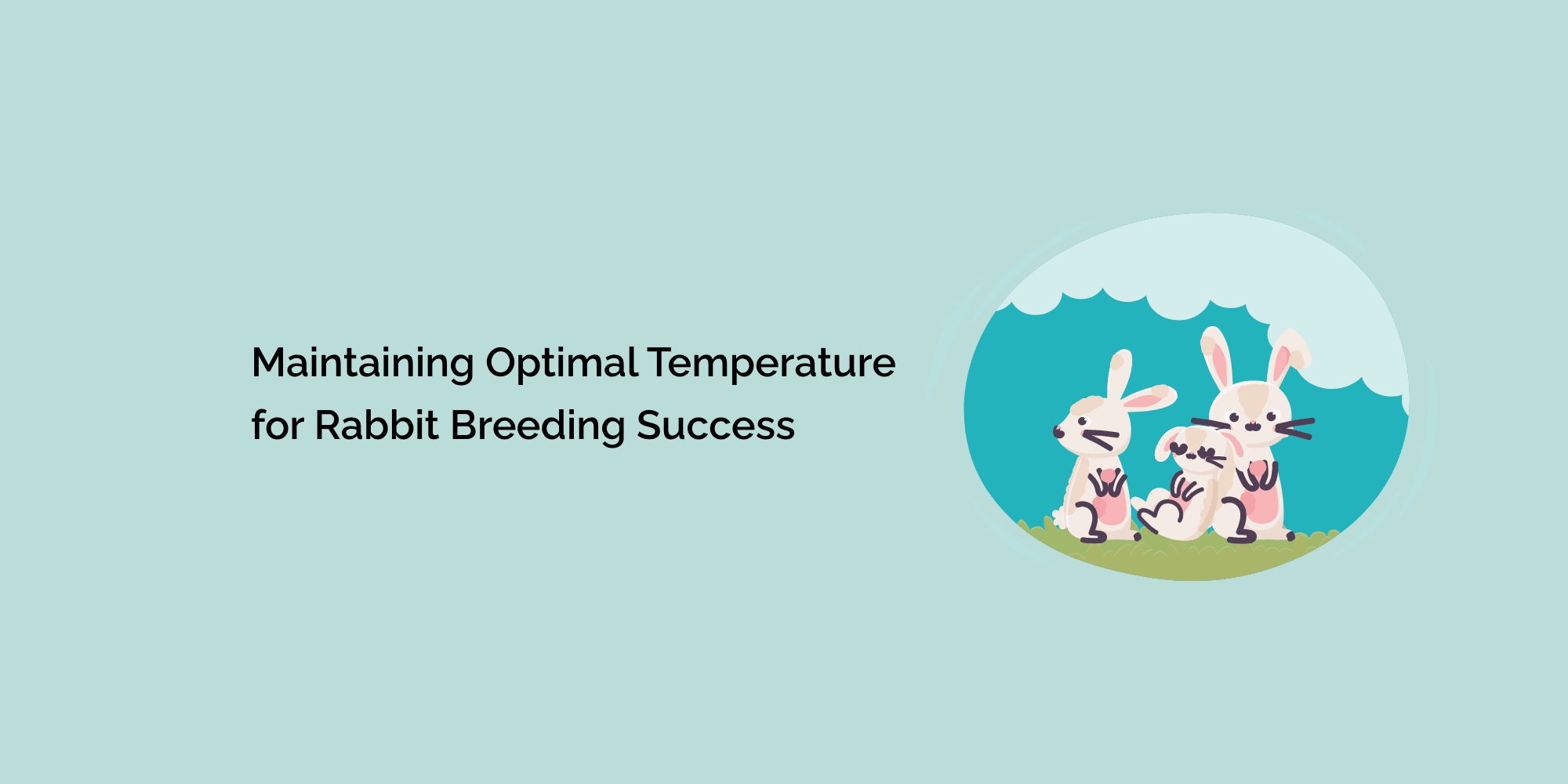Successful rabbit breeding is not only dependent on genetics and proper care but also on maintaining optimal environmental conditions. Temperature plays a crucial role in the reproductive health and overall well-being of rabbits. Fluctuations in temperature can lead to stress, reduced fertility, and increased risks of health issues.
In this comprehensive blog, we will explore the importance of maintaining optimal temperature for rabbit breeding success and provide valuable tips to ensure your breeding program thrives.
Understanding the Impact of Temperature on Rabbit Breeding
The Significance of Temperature in Rabbit Reproduction
Temperature directly affects the reproductive hormones and processes in rabbits. Maintaining a consistent and suitable environment can enhance breeding success, litter sizes, and overall reproductive performance.
The Ideal Temperature Range for Rabbit Breeding
The recommended temperature range for optimal rabbit breeding success is typically between 60°F to 70°F (15°C to 21°C). Within this range, rabbits experience minimal stress and can efficiently regulate their body temperature, promoting successful breeding.
Effects of Temperature Extremes on Breeding Success
Cold Temperature Effects
Exposure to cold temperatures can adversely impact rabbit breeding. Cold stress can lead to reduced breeding activity, decreased libido in bucks, and decreased fertility in does. Furthermore, pregnant does may face challenges in maintaining their pregnancy, leading to a higher risk of miscarriages.
Hot Temperature Effects
High temperatures can also be detrimental to rabbit breeding success. Heat stress can decrease feed intake, disrupt breeding behaviors, and cause reproductive abnormalities. Pregnant does are at a higher risk of resorbing or aborting their litters in excessively hot conditions.
Strategies to Maintain Optimal Temperature for Rabbit Breeding
Providing Proper Shelter and Insulation
Creating a well-insulated and sheltered environment is essential to protect rabbits from temperature fluctuations. Insulated breeding areas and nest boxes help maintain a stable and comfortable microclimate, especially during extreme weather conditions.
Implementing Temperature Control Measures
For rabbitries located in regions with extreme climates, temperature control measures are indispensable. Utilizing fans, misting systems, or heaters can help regulate the ambient temperature within the rabbitry and ensure a consistent environment for breeding success.
Managing Temperature during Breeding Seasons
Preparing for Breeding Season
Before the breeding season begins, rabbit breeders should ensure that the rabbitry is well-prepared for the specific climate conditions during mating and gestation. This includes conducting necessary repairs, checking insulation, and having appropriate temperature control systems in place.
Monitoring and Adjusting During Breeding
Throughout the breeding season, continuous monitoring of temperature fluctuations is essential. Rabbit breeders should be proactive in making adjustments to ensure rabbits stay within the optimal temperature range. This may involve using cooling or heating methods based on the weather.
Recognizing and Addressing Breeding Challenges
Identifying Breeding Problems Caused by Temperature
Understanding the signs of breeding challenges related to temperature is crucial. Observing changes in breeding behavior, litter sizes, and litter survival rates can help pinpoint temperature-related issues.
Seeking Veterinary Advice
If breeders encounter persistent breeding problems despite maintaining optimal temperature conditions, seeking advice from a qualified veterinarian experienced in rabbit breeding is crucial. A thorough examination can help identify underlying health issues and provide appropriate solutions.
Conclusion
Maintaining optimal temperature conditions is a critical factor in ensuring successful rabbit breeding. By understanding the impact of temperature on rabbit reproduction and implementing appropriate strategies to regulate the environment, breeders can promote breeding success, increase litter sizes, and enhance overall rabbit health.
Creating a comfortable and consistent environment is the key to the success of your rabbit breeding program, ensuring happy and healthy generations of bunnies in your care.








